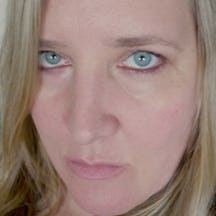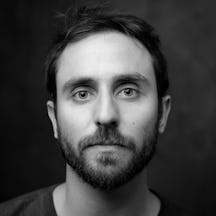As well as tending to our vanity and personal grooming, hair stylists, colourists and barbers can detect potentially dangerous health problems. Their unique position allows them to spot skin cancer, high blood pressure and even domestic abuse, and steer us towards medical attention.
People from all walks of life develop long-standing relationships with hairstylists and trusted barbers, who often become confidants for sharing secrets and deep-seated anxieties. Our hairdressers may be the only people in our lives who get a regular, 360-degree, up-close look at every inch of our scalps. This creates an incidental opportunity for them to notice abnormalities we might otherwise miss that can signal serious potential health conditions such as scalp skin cancer, where early detection can be a matter of life over death.
In the UK alone, there are some 2,400 melanoma skin cancer deaths annually, according to Cancer Research UK. In North America, an estimated one in five Americans will develop skin cancer in their lifetime, and nearly 1.5 million are diagnosed with skin cancer each year, with skin cancer causing more than 12,000 deaths annually.
To help hair professionals embrace their role as a first line of defence in health screening and early detection of scalp skin cancer, UK-based national melanoma and skin cancer charity Skcin has developed MASCED (Melanoma and Skin Cancer Early Detection), an online accreditation programme that trains hair, health and beauty professionals in the UK and can be renewed annually.
In the US, dermatologist Dr Ramona Behshad founded Stylists Against Skin Cancer (SASC) in 2016. The campaign connects members of the American Society for Dermatologic Surgery (ASDS) with local hair professionals to educate them about spotting suspicious scalp lesions and how best to guide clients toward seeking medical help.

The Painted Lady, Shoreditch, London
The stylist’s unique view
“The point is not to make hairstylists feel like they have to diagnose,” Dr Behshad told me in a phone interview from her office in Chesterfield, Missouri, “but to give them a couple of clues about when they should refer clients to a dermatologist. They can really change people’s lives. Melanoma is a cancer that kills people. Others, like basal cell carcinoma and squamous cell carcinoma, don’t kill, but if you catch them early enough they are easy to take care of.”
Dr Behshad got the idea to start SASC soon after she began practising, in 2013 or 2014. “Three or four patients within the same week came in, one with very, very advanced melanoma,” she explains, “all found by hairstylists who had the courage to mention that they had found something. The doctor didn’t see it; the patient didn’t see it, because you often can’t see your scalp very well under your hair. That got me thinking.”
Far from that week being a one-off, Dr Behshad said she gets patients “all the time, even this week” coming in with skin abnormalities spotted by hairstylists. “Even a dermatologist can’t adequately examine the scalp the way a hairstylist can,” she said, “with wet hair that they are parting as they cut it to expose the entire scalp.”
In her experience women were more likely to come in after being alerted to a potential issue by a hairstylist, particularly those with long hair that might otherwise camouflage any issues. “Hairstylists can really help people,” Dr Behshad said, “because doctors will never have the relationship you have with your hairstylist, who sees you every month or two months instead of a doctor, who sees you maybe once a year.”
Because skin-cancer prevention and early detection are crucial, SASC instructs hair professionals on how to detect the warning signs of the most common scalp-based skin cancers. It also educates them on how to talk to their clients about suspicious lesions in a way that puts them at ease. This includes how to refer clients to a dermatologist, and how to share basic skin-cancer prevention measures.
Dr Behshad explains that hair professionals get an up-close look at benign issues such as dry skin and dandruff as well as moles, age spots or suspicious-looking scalp lesions that might warrant additional screening by a doctor. She offers a script for how to talk to clients without alarming them and encourages them to use an acronym, SHADE, to help them remember follow-up questions about whether the client is experiencing any sensations associated with a spot: whether its (s)urface is scaly, crusty or bleeding; its (h)eight raised or sunken; and whether it’s more than a month old or the patient is over (a)ge 40, in an effort to steer clients towards (d)ermatologists who can further (e)valuate.
Dr Behshad has developed lecture materials for dermatologists that she has tested out in front of some 120 students at local cosmetology schools, which in general don’t routinely offer skin-cancer education. She has had a uniformly positive response from both teaching staff and students.

Barbergear, Leytonstone, London
How barbers reduce blood pressure
But the connection between haircare and health is not limited to the hands-on screening of scalps. In some urban areas, where neighbourhood salons and local barber shops function as vital community hubs, healthcare professionals have collaborated with small-business owners to educate people about health-related issues that extend beyond the scalp.
Dr Joseph E Ravenell from NYU Langone, a leading medical research and treatment centre, has spent many years working to improve health for African-American men by partnering with hundreds of urban barber shops in Chicago, Dallas and New York City. He has taught barbers how to measure blood pressure and refer clients to doctors to help them manage high blood pressure; the barbers also encourage colorectal cancer screenings for those who don’t have regular access to medical professionals.
“For black men, the barber shop is not just a place where you get your hair cut or your beard trimmed,” Ravenell said in a 2016 TED Talk about how barber shops can help keep men healthy. “Historically, the barber shop has been a safe haven for black men.”
“There's a lot of talk about high blood pressure in the barber shop,” Dr Ravenell said. “That's because almost 40 per cent of black men have it… More black men die from high blood pressure than from anything else, even though decades of medical wisdom and science have demonstrated that death from high blood pressure can be prevented with timely diagnosis and appropriate treatment.” High blood pressure is often undertreated or not treated at all in black men, Ravenell said, because they are the least likely group in America to have a primary care doctor (a GP).

Sharp and Flask, Kensington & Chelsea, London
Screenings and safe spaces
In a similar vein, an article in the Journal of Health Care for the Poor and Underserved examined an American study undertaken in 2008 about the practice of using hair-salon stylists as “breast cancer prevention lay health advisors” for African-American and Afro-Caribbean women in the US. The authors concluded that with proper training for staff, “Hair salons are a potentially important venue for promotion of health behaviours related to breast cancer detection.”
A similar scheme in South Lancashire in the UK, between 13 hair and beauty salons and the Wrightington, Wigan and Leigh NHS Foundation Trust, was launched in 2018. The salons offered discounts to women who attended free breast screenings as part of the Breast Screening for Beauty campaign. This aimed to encourage more women in the area – where less than half of those eligible attend – to have a mammogram every three years.
While the cliché about being able to tell your hairdresser anything isn’t technically true for everyone, the intimacy and frequency of the relationship often means that your hairdresser can observe plenty about even the things you don’t say aloud. The role of salons as safe spaces for women is at the heart of new legislation in the process of being implemented in Illinois.
This will require domestic-abuse awareness training for the US state’s 84,000 salon professionals in order to renew their licences. The one-hour class trains stylists to look for signs of domestic abuse and sexual assault, educating them on how to steer clients toward necessary resources, while not requiring them to report abuse and shielding them from legal liability. Since the Illinois bill became law, some 14 other US states have introduced or implemented similar legislation.
And it seems like this clever idea has the potential to spread even further. The Illinois legislation inspired Rachel Buck, who owns a salon in Norwich in England, to work with Norfolk domestic abuse charity Leeway to train stylists to spot signs of domestic abuse. In Norfolk, police take 55 domestic abuse-related calls per day, and encourage domestic-abuse awareness for a range or workers, including hairdressers, as a tool toward helping victims get the lifesaving help they need.
About the contributors
Kristin Hohenadel
Kristin Hohenadel is an American writer and editor based in Paris. Her work has appeared widely in publications including the New York Times, Slate and Fast Company.
Thomas S G Farnetti
Thomas is a London-based photographer working for Wellcome. He thrives when collaborating on projects and visual stories. He hails from Italy via the North East of England.


